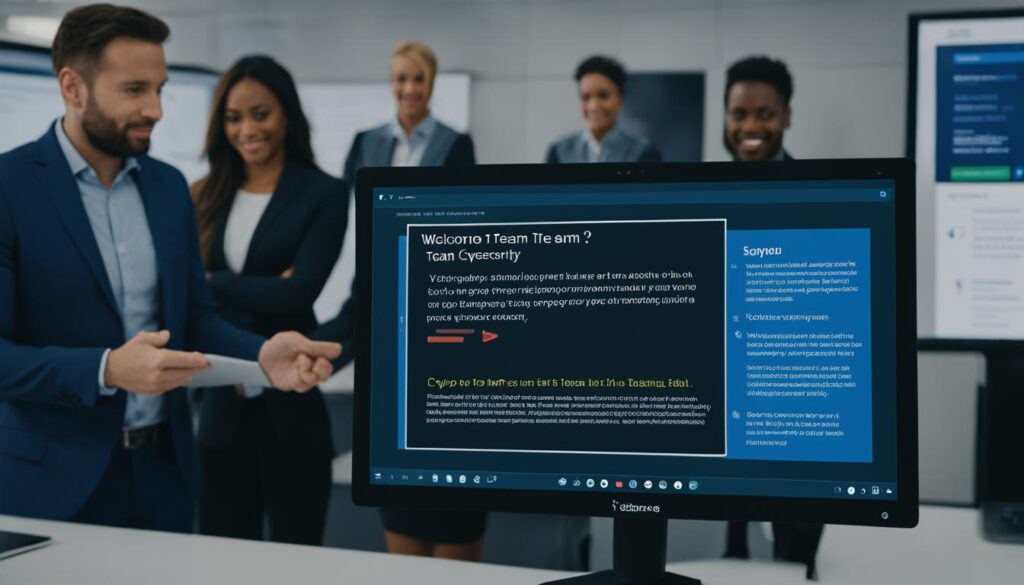Did you know that almost 90% of companies have experienced difficulties in their employee offboarding process?
While onboarding receives significant attention and resources, the process of offboarding, or separating employees from a company, often falls through the cracks. This neglect can have far-reaching consequences, including a negative impact on company culture, knowledge loss, and potential security risks.
In this article, we will explore the importance of employee offboarding, the challenges faced in modern employee management, the role of HR in facilitating smooth transitions, and best practices for successful offboarding. Whether you are an HR professional, a manager, or a business owner, understanding the opposite of onboarding is crucial for maintaining a positive work environment and safeguarding your organization’s reputation.
Key Takeaways:
- Employee offboarding is the process of separating employees from a company and is equally important as onboarding.
- Neglecting offboarding can lead to negative consequences such as knowledge loss, security risks, and damage to company culture.
- HR plays a crucial role in managing the offboarding process and ensuring smooth transitions for departing employees.
- Best practices for successful offboarding include creating an offboarding checklist, conducting exit interviews, and providing support for departing employees.
- A well-planned offboarding process can benefit a company by maintaining a positive reputation, protecting data security, and potentially rehiring former employees.
The Importance of Employee Onboarding
Employee onboarding is a crucial process that goes beyond basic orientation. It plays a vital role in the success and retention of new hires.
Effective onboarding ensures that employees are not only equipped with the necessary skills and knowledge to perform their job but also feel connected to the organizational culture and values.
Studies have shown that a well-executed onboarding process can boost employee retention rates by over 80%. This is because employees who feel supported and integrated into the company are more likely to stay long-term.
During the onboarding process, new hires are introduced to their roles, responsibilities, and the overall structure of the organization. They receive training and support to help them become productive and engaged members of the team.
Talent management software, such as integrated onboarding platforms, can streamline the process by automating administrative tasks and providing a centralized hub for new hires to access resources and information.
In addition to utilizing technology, organizations can enhance the onboarding experience by assigning mentors or buddies to new employees. These mentors can offer guidance, answer questions, and provide a support system as the new hire integrates into the company.
Benefits of Employee Onboarding:
- Improved employee retention rates
- Increased productivity and engagement
- Enhanced organizational culture and values
- Clear understanding of job responsibilities
- Established connections within the team
By prioritizing employee onboarding, organizations can set their new hires up for success and foster a positive and supportive work environment.
The Significance of Employee Offboarding
Employee offboarding is a crucial and structured procedure that handles the transition when an employee is about to depart. It ensures a smooth role transition, concludes the employee’s journey on a positive note, and captures valuable organizational knowledge.
During the offboarding process, knowledge transfer plays a vital role. It involves transferring the departing employee’s knowledge, expertise, and insights to their successors or other team members. This transfer of knowledge helps maintain continuity in operations and prevents any disruptions in workflow. By preserving institutional knowledge, organizations can avoid reinventing the wheel and continue to build upon past successes.
Another important aspect of the offboarding process is ensuring the return of company assets. This includes retrieving physical assets, such as laptops or access cards, to protect the company’s resources and maintain data security. By properly collecting these assets, organizations can safeguard confidential information and prevent any potential misuse.
To gain valuable feedback and insights, conducting exit interviews is a valuable practice during the offboarding process. Exit interviews provide departing employees with an opportunity to share their experiences, suggestions, and concerns. This feedback can help organizations identify areas for improvement, enhance employee satisfaction, and refine their overall employee experience.
Moreover, a well-structured offboarding process can foster positive alumni relationships. Former employees are potential brand ambassadors or collaborators who can contribute to the organization’s growth even after they leave. By building and nurturing alumni relationships, companies can tap into their network for future collaborations, referrals, or business opportunities.
To visualize the significance of employee offboarding, refer to the image below:

This image illustrates the various stages and elements involved in the employee offboarding process, including knowledge transfer, asset retrieval, and exit interviews. By following a well-defined offboarding process, organizations can ensure a smooth transition, maintain data security, and build positive relationships with their former employees.
Managing the Challenges of Modern Employee Management
The workforce has evolved significantly in recent years, bringing forth new challenges for employee management. One of the key factors influencing this transformation is the generational differences among employees. Each generation, from baby boomers to millennials and Generation Z, has distinct values, priorities, and expectations in the workplace.
Traditionally, baby boomers valued job stability and loyalty, often staying with the same company for many years. However, millennials have shifted their focus and prioritize experiences, work-life balance, and personal growth. On the other hand, Generation Z, the youngest generation in the workforce, displays adaptability and a pragmatic approach to work.
As such, HR professionals face the task of adapting employee onboarding and offboarding processes to meet the needs and expectations of different generations. This includes understanding the generational differences in terms of workplace culture, communication styles, and employee priorities.
Workplace Expectations
- Baby boomers prefer clear hierarchies and structured organizations.
- Millennials value a collaborative and inclusive work environment.
- Generation Z employees seek flexibility, autonomy, and the opportunity to learn.
Employee Priorities
- Job stability and benefits were important to baby boomers.
- Millennials prioritize work-life balance, career growth, and purposeful work.
- Generation Z values a supportive work environment, career development, and a balance between work and personal life.
In order to effectively manage a diverse workforce, HR professionals must employ adaptable strategies to accommodate the unique needs of each generation. This includes tailoring onboarding and offboarding processes to align with the desired workplace expectations and employee priorities.
By understanding and addressing generational differences, HR professionals can create an inclusive and engaging workplace environment that promotes employee satisfaction, retention, and productivity.
The Role of HR in Onboarding and Offboarding
The success of onboarding and offboarding processes relies heavily on the expertise and coordination of the HR department. As the central hub for employee management, HR plays a crucial role in ensuring smooth transitions for both new hires and departing employees.
One of the key responsibilities of the HR department is managing the technical aspects of onboarding and offboarding. This includes coordinating with the IT team to provide new employees with system access and ensuring that departing employees’ access is revoked in a timely manner. By overseeing these essential tasks, HR minimizes any disruption to workflow and maintains data security.
In addition to technical support, HR is also responsible for managing the logistical aspects of onboarding and offboarding. This involves coordinating with various administrative departments to ensure that new hires have the necessary equipment, workspace, and resources to perform their duties effectively. Similarly, during the offboarding process, HR ensures that departing employees return company assets and settle any outstanding matters.
To streamline and optimize these processes, HR professionals can leverage HR technology. Dedicated modules for onboarding and offboarding not only automate repetitive tasks but also provide a centralized platform for managing employee information and documentation. By adopting HR technology, HR departments can enhance consistency, efficiency, and thoroughness in their onboarding and offboarding procedures.
Furthermore, HR technology enables HR professionals to provide a seamless and personalized experience for both new hires and departing employees. From customized welcome messages to automated reminders for completing required paperwork, technology allows HR to create an onboarding experience that aligns with the company’s culture and values. Similarly, during the offboarding process, HR technology can facilitate exit interviews and generate exit survey results, providing valuable feedback to improve future processes.
Overall, the HR department plays a crucial role in synchronizing the onboarding and offboarding processes. By leveraging their expertise, managing logistical aspects, and utilizing HR technology, HR professionals can ensure that employees have a positive experience from the moment they join the organization to the moment they depart.

Best Practices for Successful Offboarding
Successful offboarding requires a systematic approach and attention to detail. To ensure a smooth transition for departing employees, HR can implement the following best practices:
- Treat departing employees with fairness and kindness: Show appreciation for their contributions and provide support during the offboarding process.
- Create an offboarding checklist: Develop a comprehensive checklist or strategy guide to ensure that all necessary steps are followed, such as returning company property and revoking access to systems.
- Determine the reason for departure: Conduct exit interviews to gather valuable feedback and understand the reasons behind an employee’s decision to leave.
- Communicate transparently within the company: Notify relevant stakeholders and team members about the departure, ensuring a smooth transition for any ongoing projects or responsibilities.
- Secure company property and revoke access: Collect any equipment or assets issued to the employee and ensure access to company systems and data is promptly revoked.
- Conduct exit interviews: Provide departing employees with an opportunity to share their experiences, insights, and suggestions, which can help identify areas for improvement.
- Express gratitude: Show appreciation for the departing employee’s contributions and express well wishes for their future endeavors.
- Recommend outplacement services: Assist departing employees by offering recommendations or resources for outplacement services to support their job search and career transition.
Implementing these best practices can help ensure a positive offboarding experience for both the organization and the departing employee.
Benefits of a Well-Planned Offboarding Process
A well-planned offboarding process brings several benefits to your company. Firstly, it helps to maintain a positive company reputation. When employees leave your organization on good terms, it reflects well on your company and creates a positive image in the eyes of both current and potential employees.
Secondly, a well-executed offboarding process ensures data security. By properly handling the handoff and revocation of access, you can protect sensitive company information from falling into the wrong hands. This minimizes the risk of data breaches and unauthorized access to proprietary data.
In addition, a thoughtful offboarding process contributes to a positive company culture. When departing employees feel supported and valued during their transition, it sends a message to your remaining staff that you care about their well-being. This fosters loyalty and a positive work environment.
Furthermore, an effective offboarding process increases the likelihood of rehiring former employees, often referred to as “boomerang employees.” These individuals already have experience and familiarity with your company, making them valuable assets when they return. Embracing boomerang employees can bring fresh perspectives, enhance team dynamics, and streamline the onboarding process for their eventual return.
Finally, automation through HR technology streamlines your offboarding processes. By implementing offboarding automation, you reduce the risk of errors and inconsistencies. This ensures a seamless transition for departing employees while saving time and effort for your HR team.




